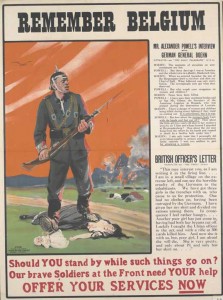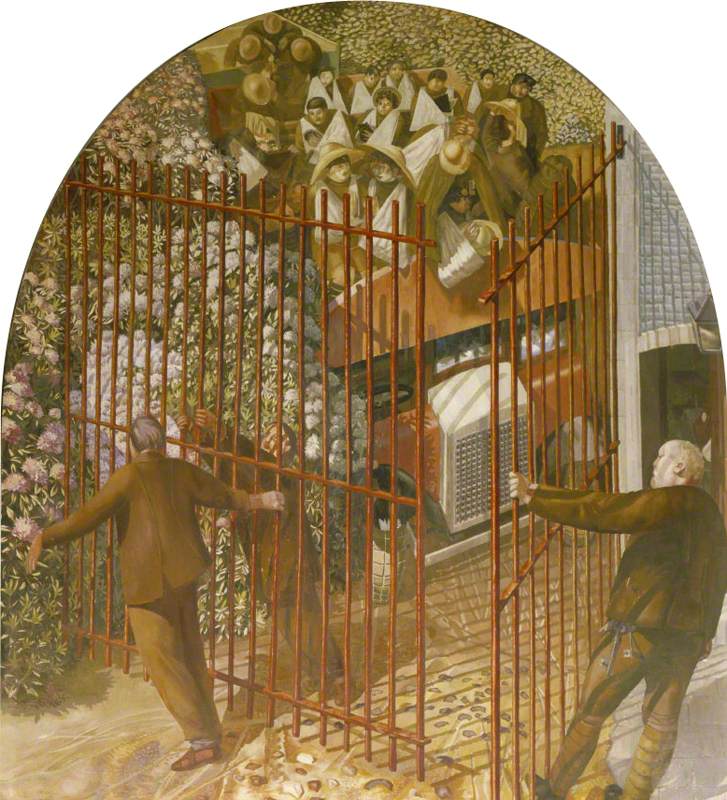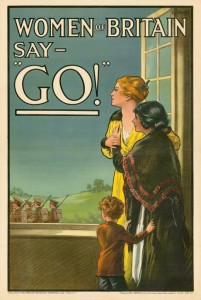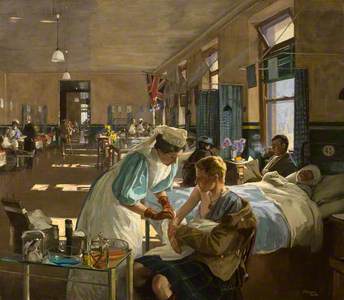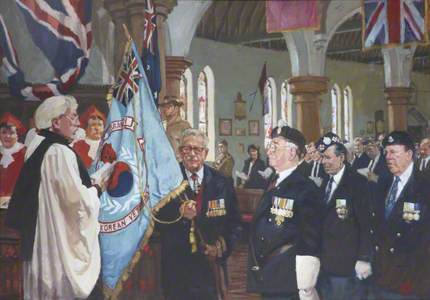There is a long tradition of depicting war veterans in art. If you search Art UK, you will find veterans from numerous conflicts, showing both the visible and invisible scars of war.
Study for 'The Day after the Battle of Chevy Chase'
1810–1812
Edward Bird (1772–1819) 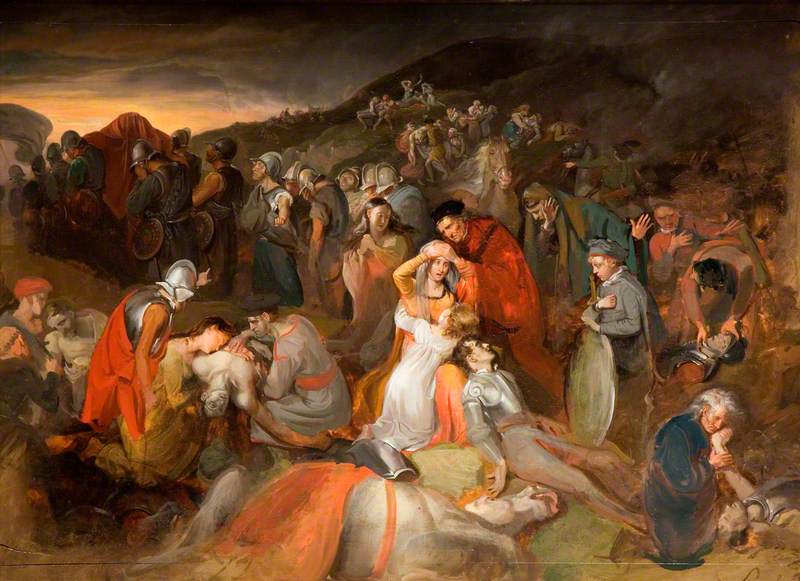
This image shows in detail the day after a battle. Men and horses lay dead on the field. The artist, Edward Bird, has captured the pallor of death in the skin of the corpses and the horses. The woman in the centre of the painting is overcome with grief and horror.
The painting is based on an English ballad and tells the story of a hunting party led by Percy, Earl of Northumberland. Inadvertently they crossed the English-Scottish border and the Earl of Douglas thought it was an invasion. The ensuing battle left few alive. It is probable that this was actually the Battle of Otterburn, with some of the facts mixed around, which took place in 1388. Bird become a specialist in history and battle paintings and that skill can be seen here.
Wounded, London Hospital, 1915
1915
John Lavery (1856–1941) 
The artist John Lavery had joined the Artists Rifles during the First World War but was deemed unfit to fight at the front. This painting shows the first lot of patients being received by the Royal London Hospital from the Western Front. Looking closely you can see the various types of wounds that the men suffered.
Many local organisations would spring up to help the wounded soldiers of the First World War. The wounded would also battle a lack of understanding relating to their wounds as reported in the East London Advertiser of 1917:
'Medical authorities say that it will be necessary to establish institutions for the special treatment of nerve shattered soldiers. Many have all power of speech, or stammer as a result of shell-shock, and these and other disabilities, the outcome of a subconscious brain, are very likely to become permanent in the absence of special treatment. This could best be given in industrial rather than in medical institutions where all kinds of indoor and outdoor work would be carried on, as well as scientific training in mind and body for the patients.
'There are scores of cases of remarkable recoveries. Thus, an ex-soldier, discharged from hospital as a hopeless case of loss of speech, recovered the use of his tongue on being tendered the wrong and insufficient change in a purchase he was making.
'Having a tooth out and getting excited over a game of cards, have effected cures, and it would seem that a sudden shock, either to mind or body, is the best antidote to the consequence of shock.'
Artists have also captured the veteran at home.
This rather lovely image shows a grenadier of Napoleon's old guard playing with, presumably, his young daughter. This is more important to him then the celebrations going on in the background. His is happy in his home as the aristocrats dance and play.
The artist Horace Vernet was born in his family's apartments in the Louvre (then a palace) but they were driven out by the French Revolution in 1792. Despite this, Vernet was a supporter of the Empire. He seemed to be quite astute at supporting those who were in or about to gain power. This can be seen in the fact that his work today can be seen in the Palace of Versailles. He was commissioned by Louis-Philippe during the restoration of the palace to paint scenes depicting African campaigns. The Wallace Collection also holds an extensive collection of his work.
This painting can be compared to another by Vernet.
This powerful image is of a veteran finding evidence of past battles and remembering perhaps his past glories, times of plenty. Now he lives a spartan existence. It is no coincidence that Vernet has placed his subject in front of tumbling ruins.
There are also more jolly depictions of veterans to be found on Art UK. This famous one by David Wilkie illustrates Chelsea Pensioners rather enjoying themselves. They are celebrating the receiving and reading of the Waterloo dispatch signifying victory over 'Boney'.
Chelsea Pensioners Reading the Waterloo Despatch
1822
David Wilkie (1785–1841) 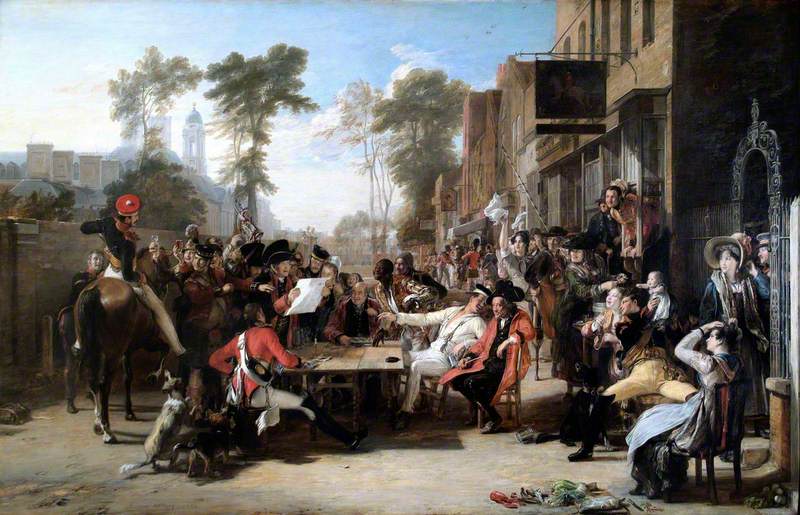
They are located outside the Royal Hospital Chelsea, the home of the Chelsea Pensioners.
This painting by Andrew Morton shows the Chelsea Pensioners in their famous scarlet coats and the pensioners of the Greenwich Hospital in blue, both army and navy together.
The wounds of war are on show here. The men look at paintings of past naval battles, ones perhaps some took part in and remember, and they pass these memories on to the other generations. It is no surprise when viewing this painting to discover that Morton was a specialist portrait painter.
Finally, in this brief investigation of veterans, we finish we two different paintings which illustrate through the artists' skill the inner wounds of war. This is the perennial problem regarding painting. How do you portray inner thoughts and turmoil on a two-dimensional canvas? In some regards the more abstract you become as an artist the easier this becomes, for example in Rothko's later work. But how do you do this in figurative painting?
One of the Old Brigade is another depiction of a Chelsea Pensioner. In focusing on the face, specifically the eyes, the artist Faith Kenworthy-Browne has captured the inner thoughts of this man who, by the title of the work, fought in battles – some perhaps forgotten now. One medal points to the Crimean war, its bars indicating specific engagements. These bars would be for battles such as 'Inkerman' and 'Alma' – the impact of these names are forgotten now. It is clear he has not forgotten.
The last painting illustrates a dedication ceremony in 1996. It is the eyes to which we turn here also.
Look at the standard-bearer – he is lost in thought, remembering what he has seen.
Even though they faded away, these veterans from the past are alive today thanks to the skill and passion of the artists. They will always be remembered because of this. Without history, there is no memory. Remember.
Gary Haines, archivist and researcher
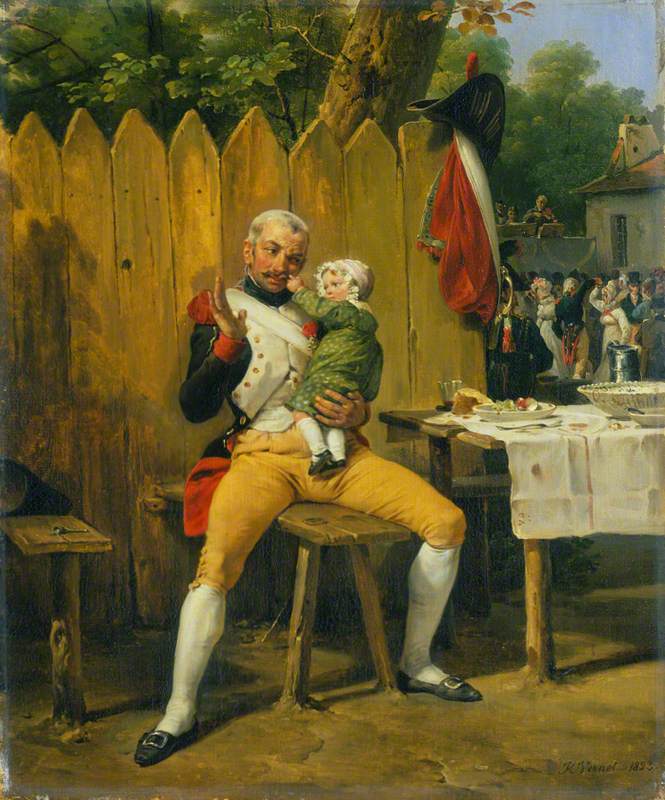
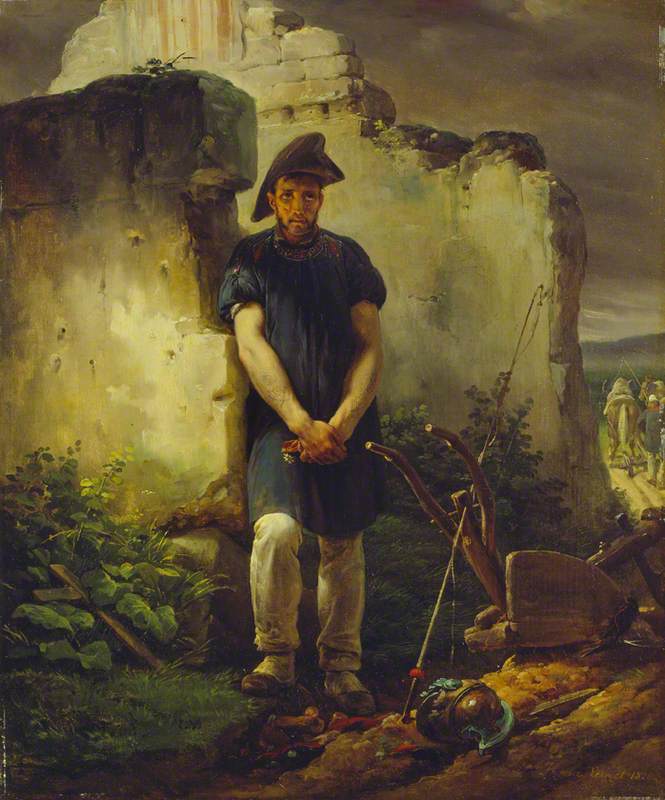
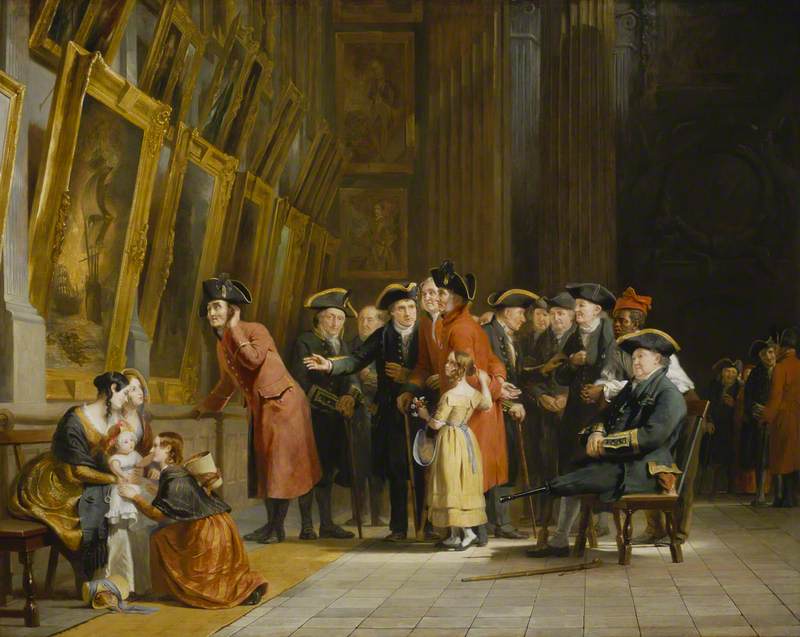
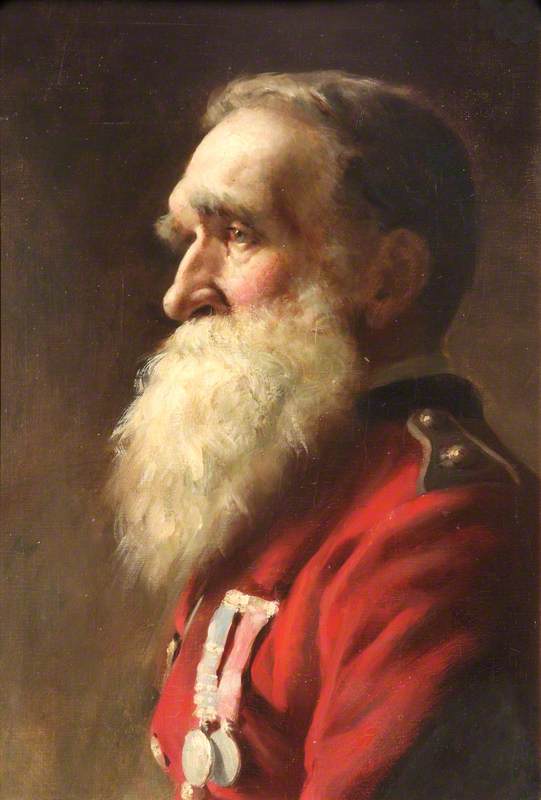


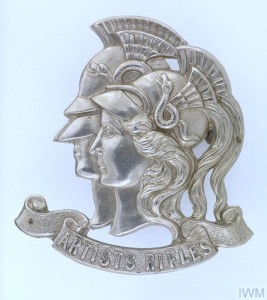
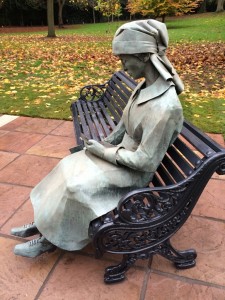
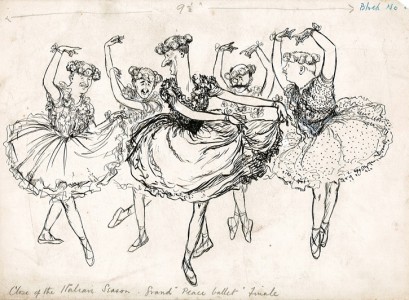
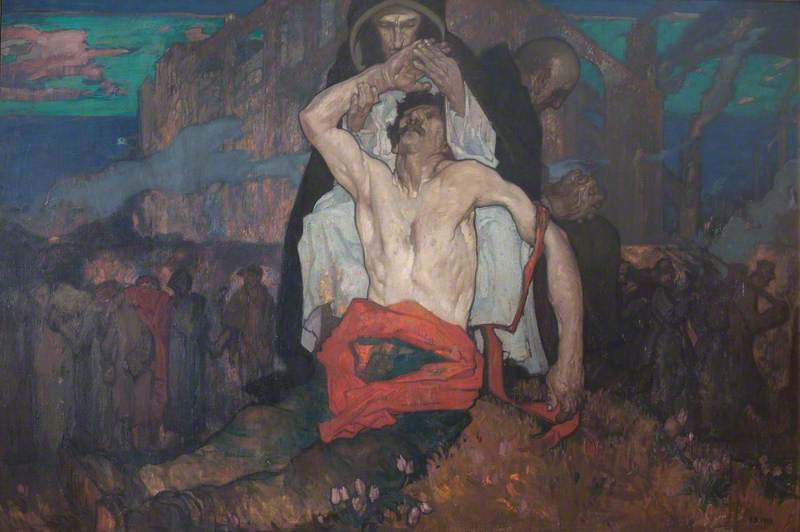
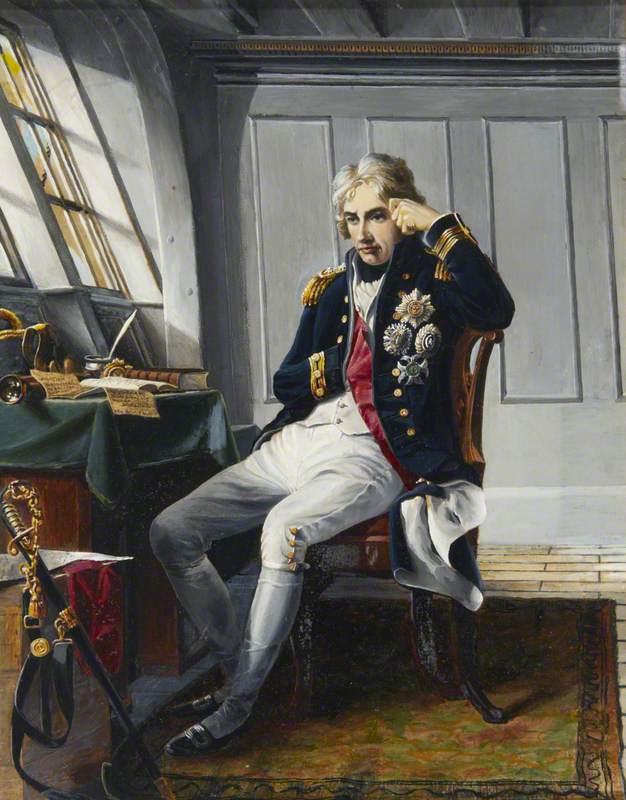
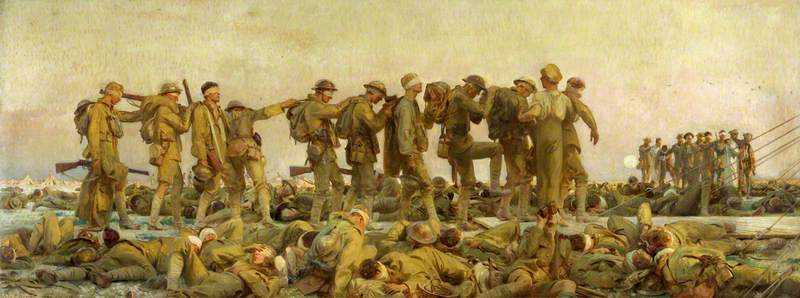
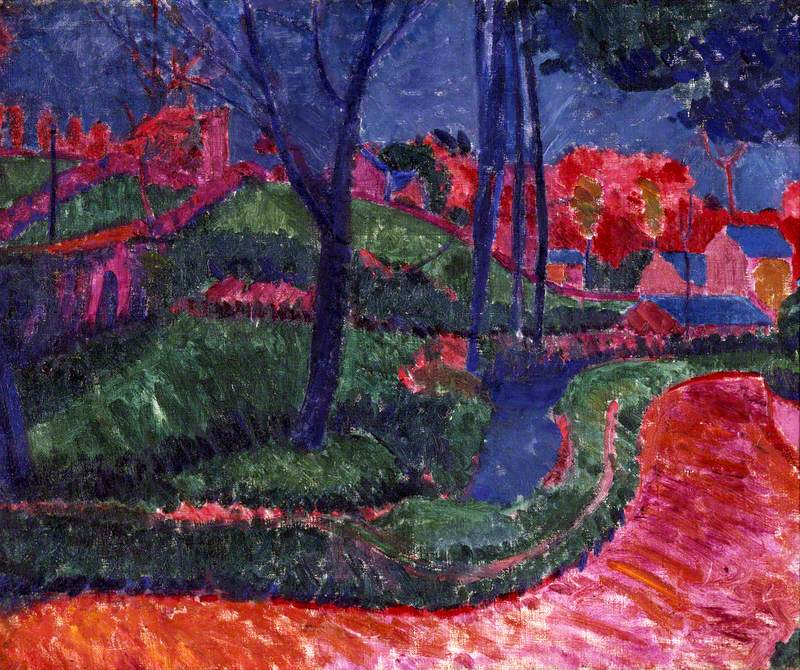

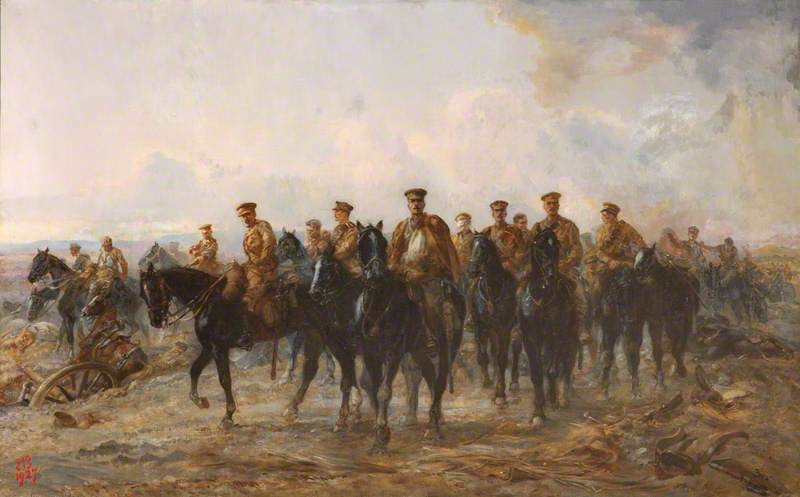
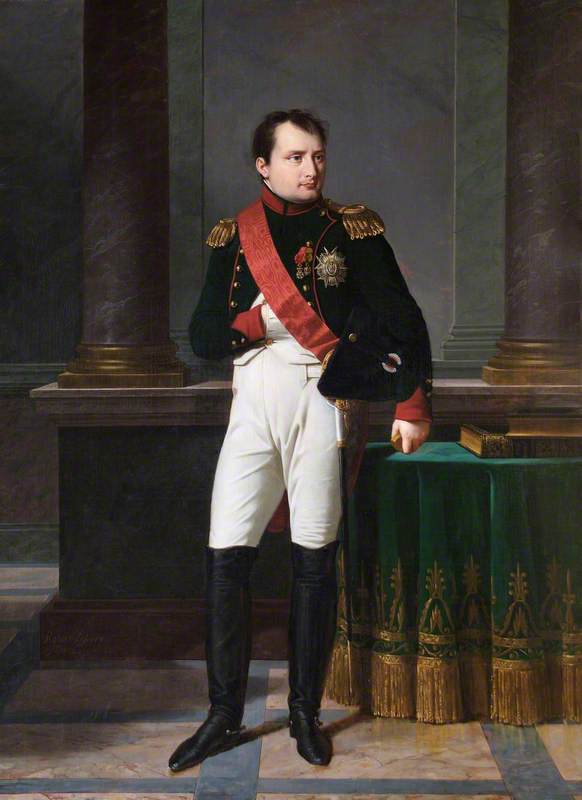
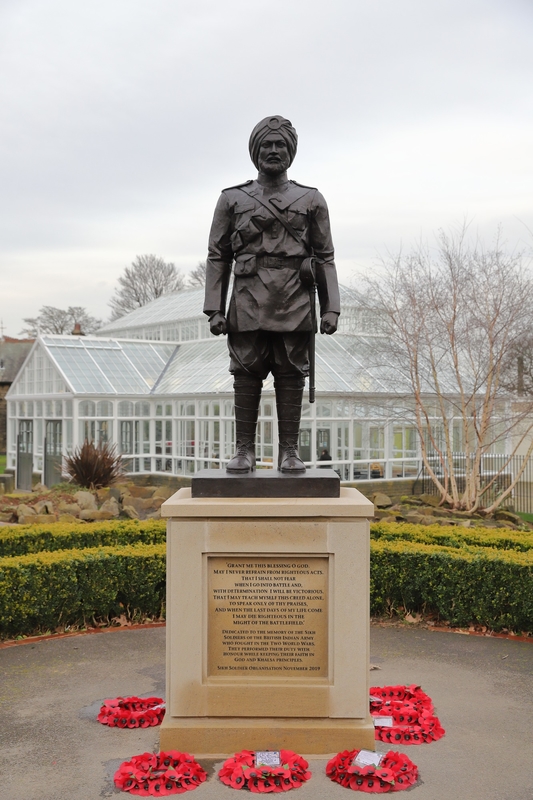
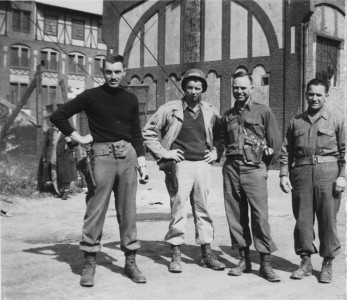
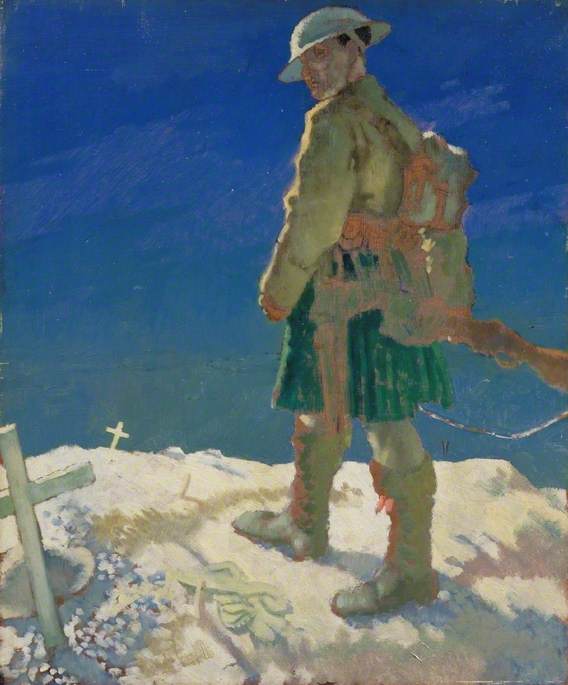
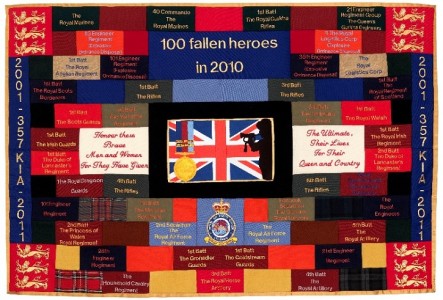
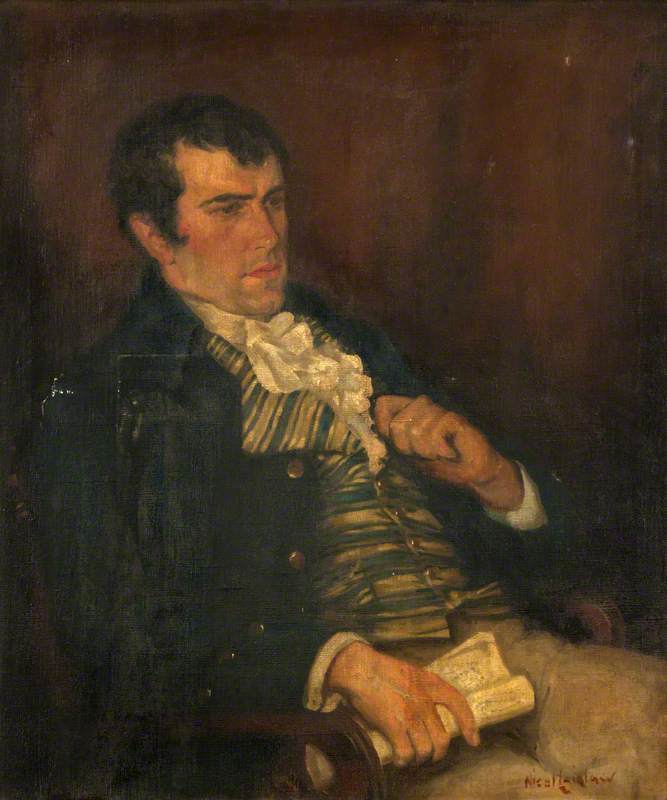
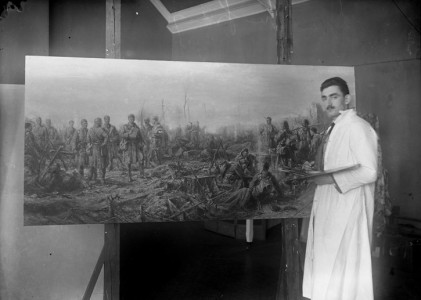
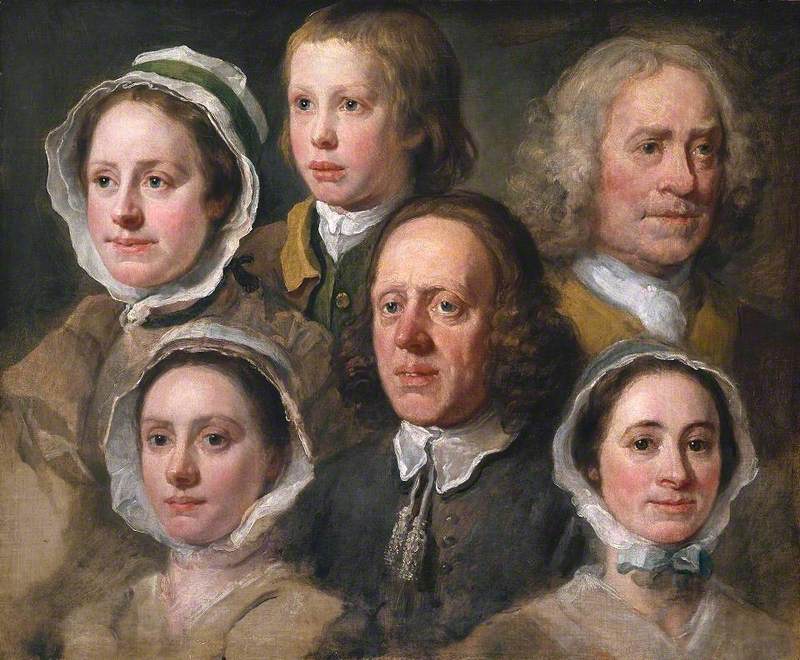
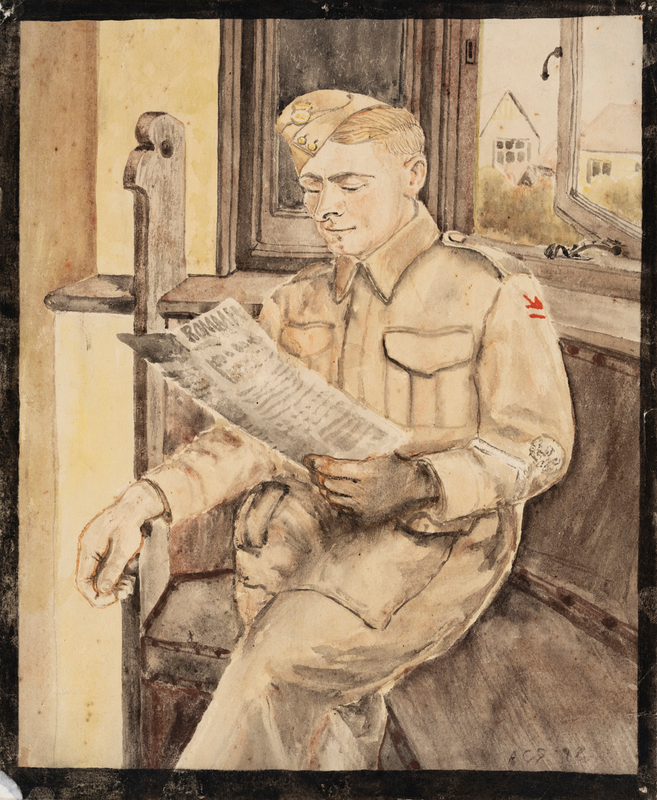
.jpg)
